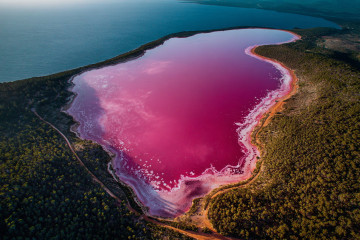If you’ve been thinking, “I need a break”, then there’s no occasion better than Thanksgiving to plan a solo trip for. Your boss tells you to complete the work quickly, and social media tells you to slowly enjoy your day. In this push and pull of work-life balance, you end up with a box full of mail and a sink full of dishes while scrolling reels. But why wait for the year-end for a reset? If you want to make a change and create an ideal routine for yourself then begin it by taking a refreshing trip to a breathtaking location right in the US. Here are 5 spots you can plan a solo trip to for Thanksgiving 2025.
Park City, Utah
If Hollywood romances have taught us something, it’s that snow is a must on holidays. Thus, if you have been hoping to put those skiing skills to the test or make angels in the snow, then Park City must be your destination. It is a world-class ski town with three different resorts. Skiing, snowboarding, tubing, fat biking or even a hot air balloon ride, you can have it all there.
Anchorage, Alaska
The Alaskan wilderness is a thing of beauty and is worth a trip for sure. Guess what, you can even tick off viewing the Northern Lights with this trip! Thanksgiving in Anchorage begins in a unique way with the Türkey Trot race, where participants dress up as turkeys and race through the streets of the city. Add in some snowy fun through skiing and ice skating, and end the trip with some seasonal delicacies.
Big Island, Hawaii
For those who would trade the mountains for the beaches, the Big Island in Hawaii is the ideal place. You will be able to escape the crowd without missing out on Hawaii’s specialities. Walk around volcanoes, try out diving, go snorkelling, walk on the beach or just hike along the trails. It is the perfect place to get lost in and find yourself.
Page, Arizona
For those who would love to explore nature’s creativity, Page is just the beginning. Visit the Horseshoe Bend, go water-sporting on Lake Powell, tour the famous Slot Canyon, and don’t forget to visit the Antelope Canyon for some great photos.
New York City
For those who thrive in the hustle and bustle of the city, there’s no place like New York. Attend the globally famous Macy’s Thanksgiving Parade, watch a Broadway show, hit up some bars, binge on some New York-style pizza and hey don’t forget to greet the Statue of Liberty!
Solo travel on Thanksgiving
While Thanksgiving is all about love and relationships, sometimes you might feel like you need some time to yourself. Where you want to sit by the beach or at the top of a snowy hill and take a deep breath? All to let go of yesterday and take in today, because the present while travelling is like no other. Happy Thanksgiving!






